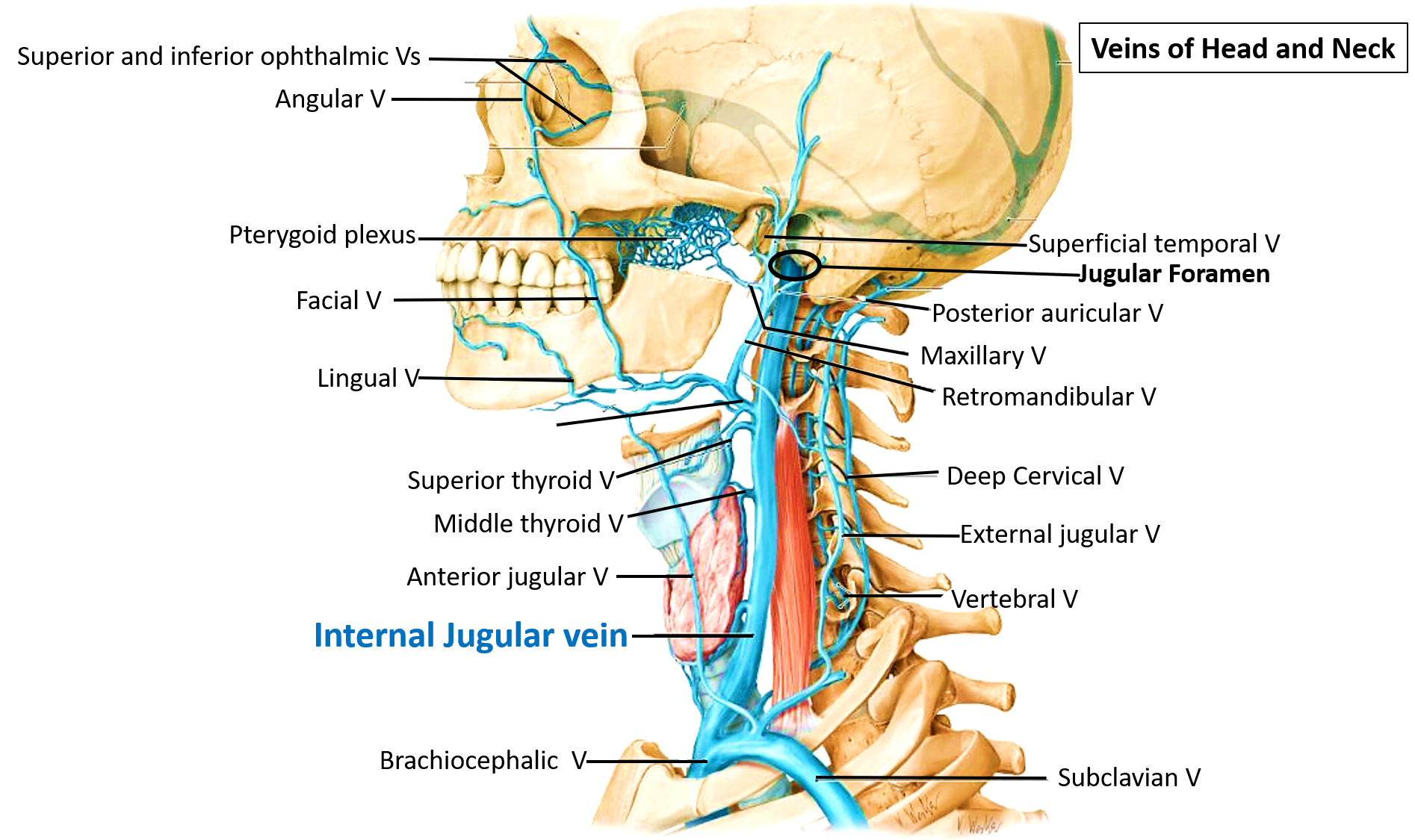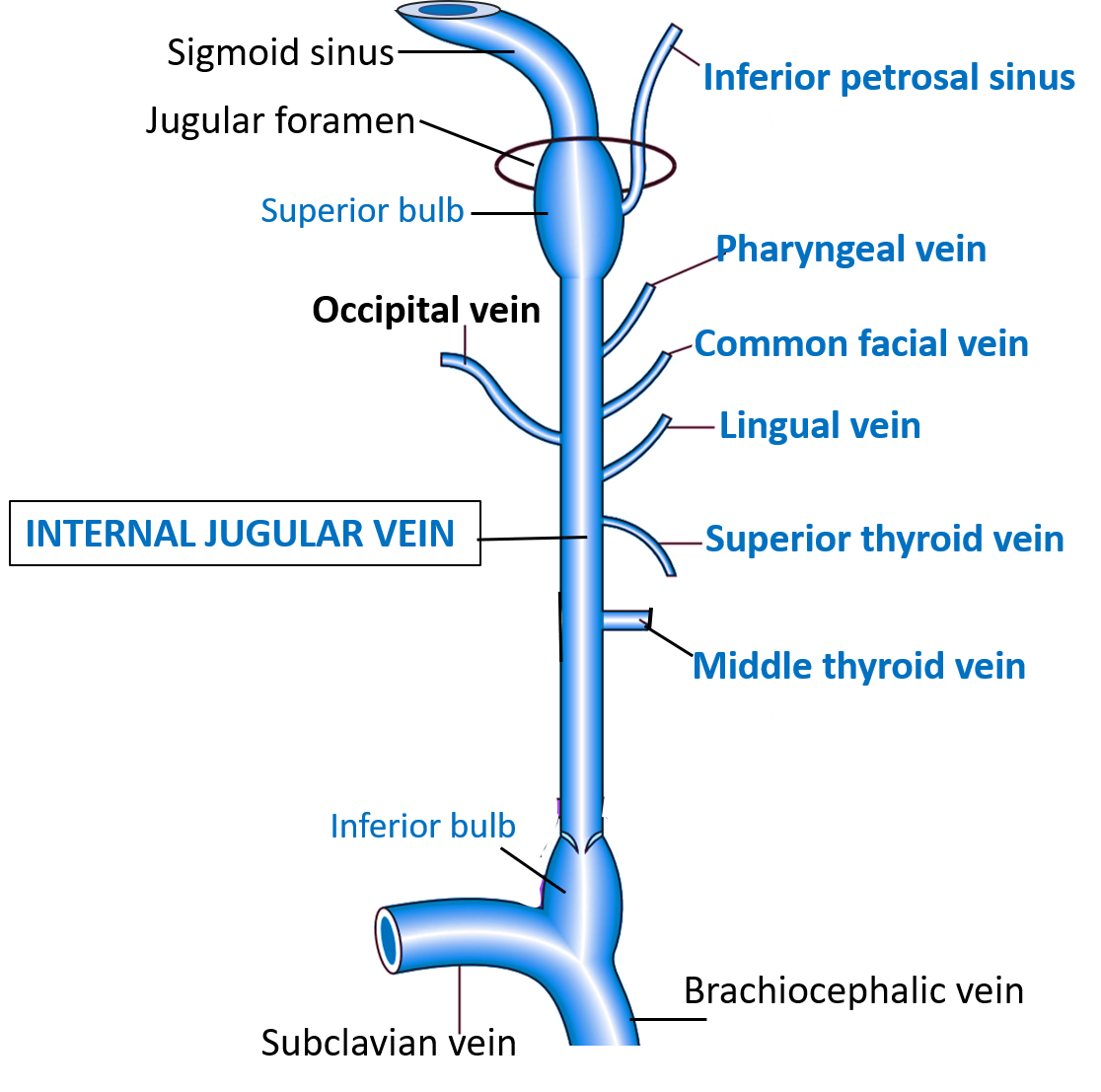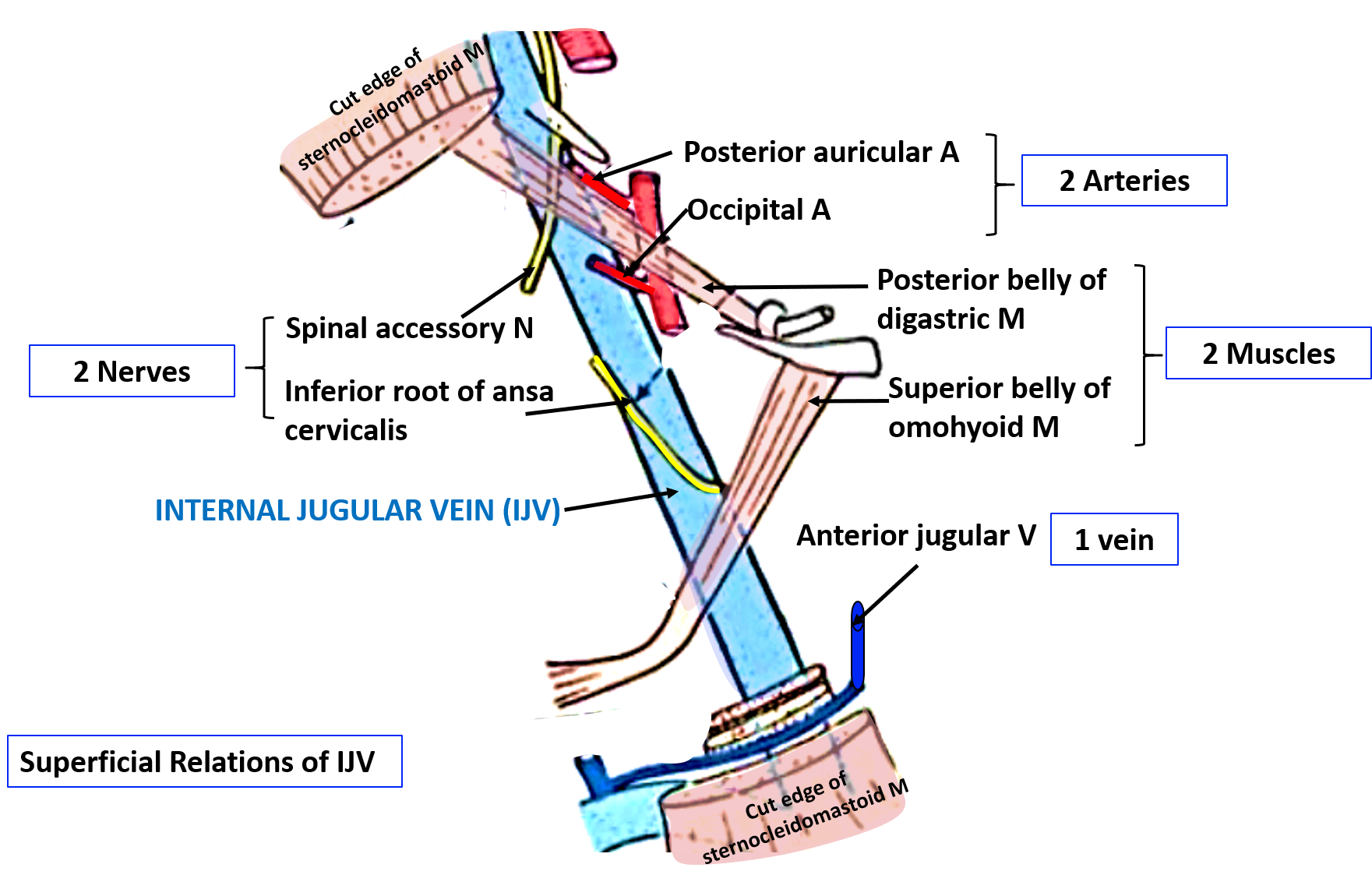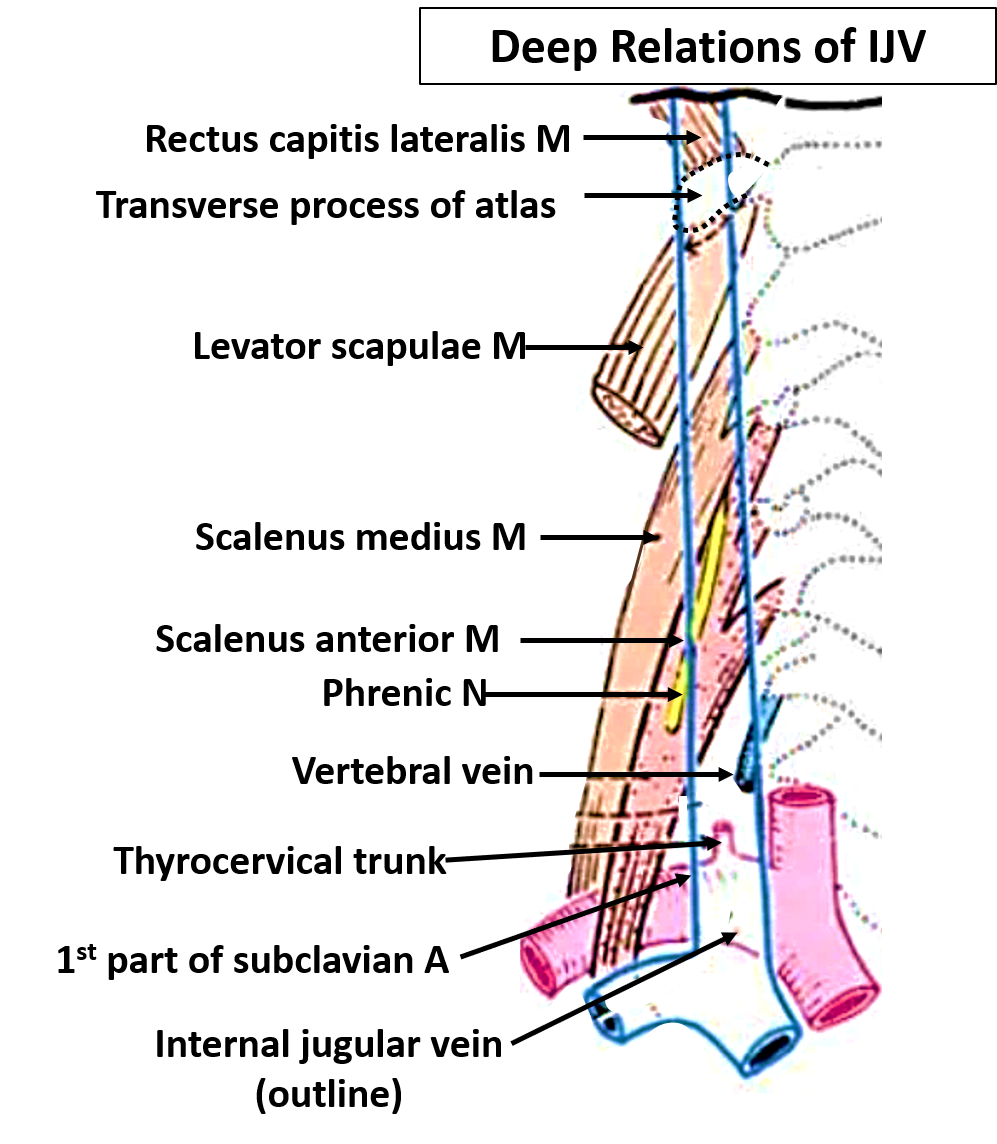Extent and Dilatations of Internal Jugular Vein
Internal jugular vein collects blood from the brain and most of the head and neck region. It is the largest vein of the neck.
Extent: It begins as continuation of the sigmoid sinus at the base of the skull in the jugular foramen and ends by joining the subclavian vein to form the brachiocephalic vein behind the sternal end of clavicle.
Dilatations of Internal jugular vein: It presents two dilatations called as bulbs which are present at its commencement and termination:
- Superior bulb: It is at the commencement in the jugular fossa at the base of skull. It is related to the floor of middle ear/tympanic cavity.
- Inferior bulb: It lies close to the its termination in supraclavicular fossa between the sternal and clavicular heads of sternocleidomastoid muscle.
Course of Internal Jugular Vein
Course
- Jugular vein passes vertically down in the neck from the jugular foramen within the carotid sheath.
- It lies lateral to internal carotid and common carotid artery within the carotid sheath.
- The deep cervical lymph nodes are located along its whole course.
- It can be indicated on the surface by a vertical line drawn from the midpoint between the tip of the mastoid process and the angle of the mandible to the sternoclavicular joint.

Tributaries of Internal Jugular Vein
Following are the tributaries of internal jugular vein:
- Inferior petrosal vein/sinus
- Pharyngeal veins from pharyngeal plexus.
- Common facial vein (formed by union of anterior division of retromandibular vein and facial vein)
- Lingual vein
- Superior thyroid vein
- Middle thyroid vein
- Occipital vein (only sometimes)

Communications of Internal Jugular Vein
- It communicates with cavernous sinus via inferior petrosal sinus.
- In the neck internal jugular vein may communicate with external jugular vein via oblique jugular vein.
Relations of Internal Jugular Vein
At the base of the skull: Internal carotid artery is anterior to internal jugular vein with the last four cranial nerves (glossopharyngeal, vagus, accessory and hypoglossal) intervening between them.
Along its course in the neck
Superficial Relations: Sternocleidomastoid covers it completely in the lower part and partially in the upper part. It is crossed by:
- 2 Muscles: Posterior belly of digastric and superior belly of omohyoid.
- 2 Arteries: Occipital and posterior auricular arteries..
- 1 Vein: Anterior jugular vein.
- 2 Nerves: spinal accessory nerve and inferior root of ansa cervicalis (descendens cervicalis).

Deep relations: The deep relations are as follows:
- Muscles from above downwards are: Rectus capitis lateralis, levator scapulae, scalenus medius, scalenus anterior.
- Transverse process of atlas.
- Phrenic nerve (anterior to scalenus anterior)
- Arteries: Thyrocervical trunk,1st part of the subclavian artery.
- Thoracic duct on left side.

Within the carotid sheath: Internal carotid and common carotid arteries are medial to it. Vagus nerve is in between the carotid artery and internal jugular vein, but is at a more posterior plane.
Applied Aspects
Internal jugular vein acts as a guide for surgeons during removal of deep cervical lymph nodes. The malignant lymph nodes may get stuck to the internal jugular vein and the surgeon has to then resect a portion of the vein.
The vein can be safely cannulated by introducing needle in the lesser supraclavicular fossa (between the sternal and clavicular heads of sternocleidomastoid muscle). The needle should be pointed backwards and upwards to prevent the puncturing of cervical pleura, which, if punctured will cause pneumothorax.
